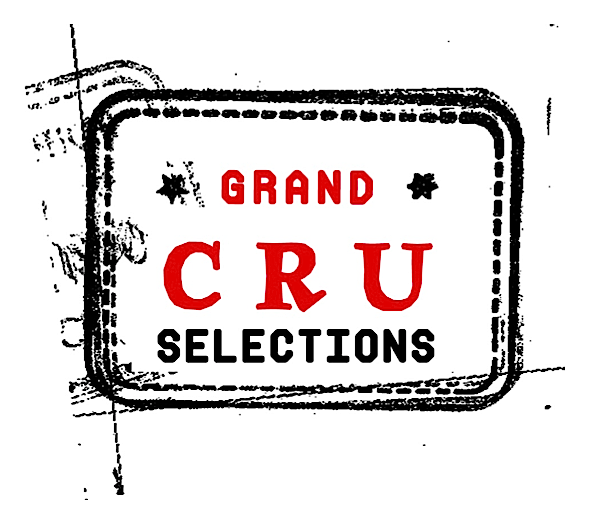Fattoria di Sammontana
Montelupo, Chianti, Tuscany, Italy
Fattoria di Sammontana relishes in a unique equilibrium between tradition and innovation at the center of one of Tuscany’s most historic winemaking regions, Chianti. As the story often goes around these parts, Sammontana and its vines began centuries ago as a rural “borgo” that was once a thriving wheat farm with some vines and olive trees as well as a giant oven used for baking terra cotta as per tradition around these parts. What is woven in today by the Dzieduszycki family - owners of this historic hamlet in Montelupo, due just west of Florence - combines curiosity and creativity with tradition and timelessness. The fresh, easy-drinking and spunky wines chart new ground for locally loved varietals like Sangiovese and Trebbiano offering new perspective on the potential of this under-appreciated region just west of Florence.
-
Sammontana dates back to the 12th century and was once property of the acclaimed Medici family. Historically, the hamlet thrived from the production of grains, olive oil, wine and terracotta. Purchased in the 1860s by a Polish family, the winery is still today in their care after 4 generations. Wine has become the predominant business, thanks to 13 hectares of vineyards planted and maintained according to biodynamic farming. Throughout the winemaking process, experimentation is prevalent and while the approach rests largely on the laurels of the land, the current generation is inspired to create clean wines that avoid manipulation, chemicals, filtration, or clarification with a healthy dose of personality.
-
Gently sloping hillsides bordering the east side of the Arno river valley just 20km from Florence in Montelupo Fiorentino are host to Sammontana’s vineyards, planted between 70 and 150 meters above sea level. The soils here are alluvial, full of stones, gravel and pebbles which have historically posed as a nuisance to farmers but Sammontana feels they give character and personality to the wines.
-
The vineyards are maintained in harmony with the rhythms of the moon, using several techniques from biodynamic agriculture, like the spraying of manure horn and using silica on the leaves of the vine. Natural pesticides are only applied when necessary using sulfur and copper, and their use is always kept to a minimum. Vines are cordon in some cases and Guyot in others, and all pruning, tying of the vines, green harvesting in the Spring and harvesting is carried out by hand.
-
Work in the cellar is aimed at allowing the wines - beyond barrel and cask - to sustain the personality, peculiarities and characteristics of Sammontana’s terroir over time. Fermentation is natural using indigenous yeast starters, while punch downs and pump overs are used on red wines allowing the winemaker to avoid filtering or clarification of the wines in the end. After fermentation, each of the wines undergoes a different aging process, but a distinct continuity can be found throughout the entire lineup: Sammontana wines are just the right bit peculiar while always extraordinarily drinkable. Over the years, they have aimed to use less and less sulphur, and limit clarification and filtering to an absolute minimum.
Wines
Prunecchio
This wine takes its name from an old, 1.5 hectare vineyard called “Prunecchio” planted on a historic plot of land on the estate. It is a field blend of Sauvignon, Trebbiano and Malvasia pressed slowly and then undergoing spontaneous fermentation using only natural yeasts in stainless steel tanks. This wine is a bit of a chameleon depending on the vintage; it can be marvelously honeyed and complexed or lean and fresh. Any which way, it’s a curious Tuscan white that keeps us coming back for more.
Albarese
The limestone based soils that predominate the Chianti area are known as “albarese”, and Sangiovese thrives in its soils. This red is the Dzieduszycki family’s take on an easy drinking, light bodied wine packed with energetic red fruit, and perfect when lightly chilled. It’s made with Sangiovese and a touch of Trebbiano, shortly macerated on their skins and vinified in stainless steel and cement vats.
Chianti DOCG
A classic, young Chianti that is just about as drinkable as they come: fresh, lively and light to medium in body. 90% Sangiovese and about 10% Canaiolo undergo maceration and slow, spontaneous fermentation on its own yeasts in glazed cement tanks with frequent pump overs and punch downs.
Primo Fuoco Bianco
In the language of local pottery making, “Primo Fuoco” is the initial clay firing that leads to the creation of terracotta, an art that once defined the village of Montelupo near Sammontana. Primo Fuoco Bianco is an acute selection of the estate’s best Trebbiano grapes, fermented naturally and macerated on the skins for about 3 months before being matured for 6 months in a 500-liter terracotta amphora made from local red clay. Only 1,200 bottles are produced.
Primo Fuoco Rosso
The first fire or “primo fuoco” in pottery making is fundamental for the creation of terra cotta. At Sammontana, terracotta amphora become aging vessels for a single vineyard of Cabernet Sauvignon, destined to become “Primo Fuoco Rosso”. An intruder of a varietal in the land of Sangiovese, Cabernet finds its rightful place at Sammontana thanks to the way it responds to this red clay vessel in which it rests for 8 months. Only 900 bottles are made annually.

